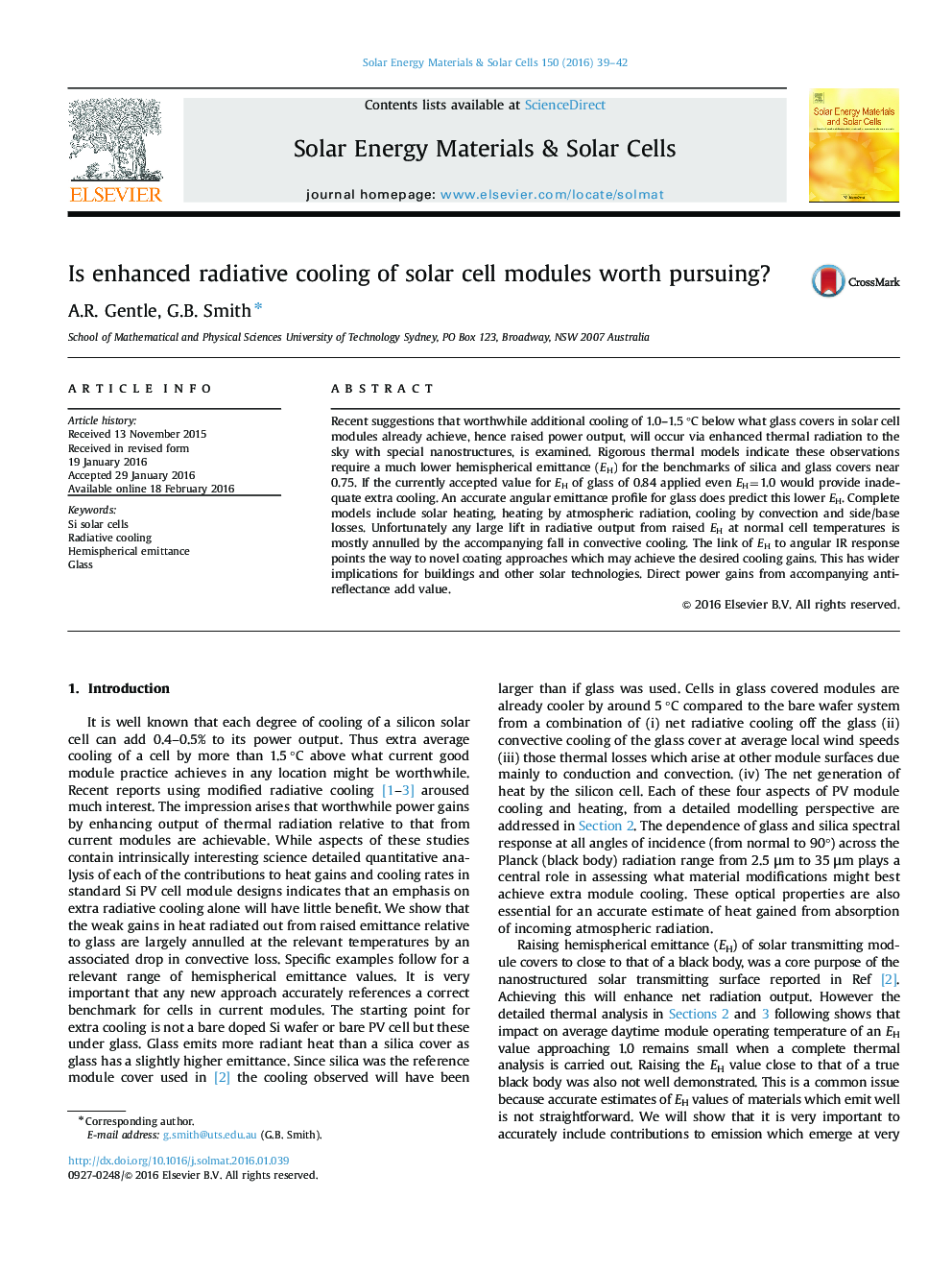| Article ID | Journal | Published Year | Pages | File Type |
|---|---|---|---|---|
| 77541 | Solar Energy Materials and Solar Cells | 2016 | 4 Pages |
•Worthwhile additional radiative cooling relative to industry standard glass covers of Si PV modules requires a cover with hemispherical emittance over 0.90.•A new approach to the evolution of hemispherical emittance with cone of emission of glass is established using a detailed angular emittance integral.•A new lower hemispherical emittance of glass of 0.75 results out to 88°, less than the standard current value of 0.84 which occurs at a 75° cone.•Gains from increased emittance are marginal due to the important role of convection.
Recent suggestions that worthwhile additional cooling of 1.0–1.5 °C below what glass covers in solar cell modules already achieve, hence raised power output, will occur via enhanced thermal radiation to the sky with special nanostructures, is examined. Rigorous thermal models indicate these observations require a much lower hemispherical emittance (EH) for the benchmarks of silica and glass covers near 0.75. If the currently accepted value for EH of glass of 0.84 applied even EH=1.0 would provide inadequate extra cooling. An accurate angular emittance profile for glass does predict this lower EH. Complete models include solar heating, heating by atmospheric radiation, cooling by convection and side/base losses. Unfortunately any large lift in radiative output from raised EH at normal cell temperatures is mostly annulled by the accompanying fall in convective cooling. The link of EH to angular IR response points the way to novel coating approaches which may achieve the desired cooling gains. This has wider implications for buildings and other solar technologies. Direct power gains from accompanying anti-reflectance add value.
